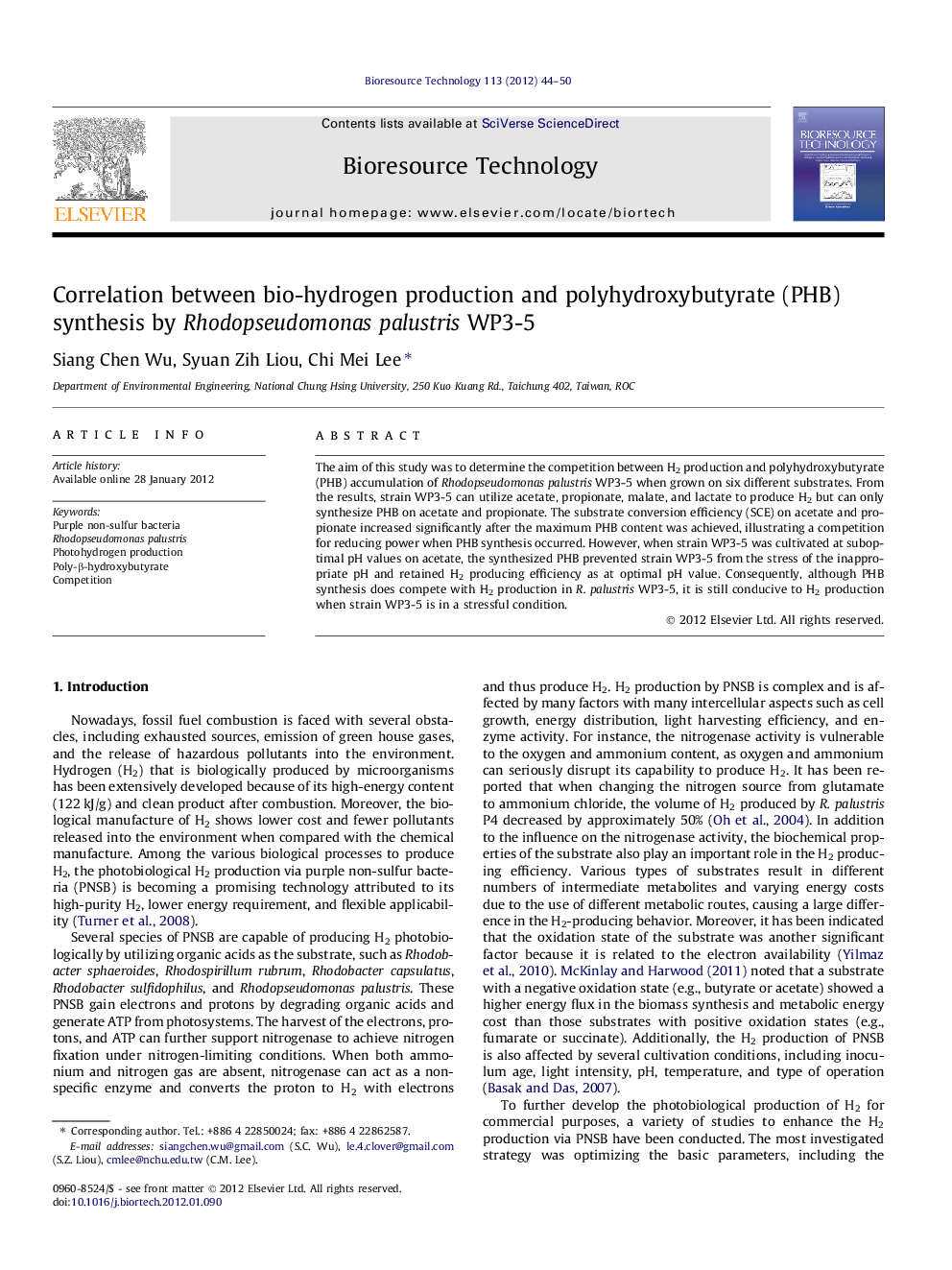| Article ID | Journal | Published Year | Pages | File Type |
|---|---|---|---|---|
| 681446 | Bioresource Technology | 2012 | 7 Pages |
The aim of this study was to determine the competition between H2 production and polyhydroxybutyrate (PHB) accumulation of Rhodopseudomonas palustris WP3-5 when grown on six different substrates. From the results, strain WP3-5 can utilize acetate, propionate, malate, and lactate to produce H2 but can only synthesize PHB on acetate and propionate. The substrate conversion efficiency (SCE) on acetate and propionate increased significantly after the maximum PHB content was achieved, illustrating a competition for reducing power when PHB synthesis occurred. However, when strain WP3-5 was cultivated at suboptimal pH values on acetate, the synthesized PHB prevented strain WP3-5 from the stress of the inappropriate pH and retained H2 producing efficiency as at optimal pH value. Consequently, although PHB synthesis does compete with H2 production in R. palustris WP3-5, it is still conducive to H2 production when strain WP3-5 is in a stressful condition.
► Acetate was the appropriate organic acid for H2 production by Rhodopseudomonas palustris WP3-5. ► R. palustris WP3-5 cannot utilize glucose or lactose as the substrate. ► The competition between PHB and H2 was observed on acetate and propionate. ► Intracellular PHB was beneficial to H2 production under a pH stress.
